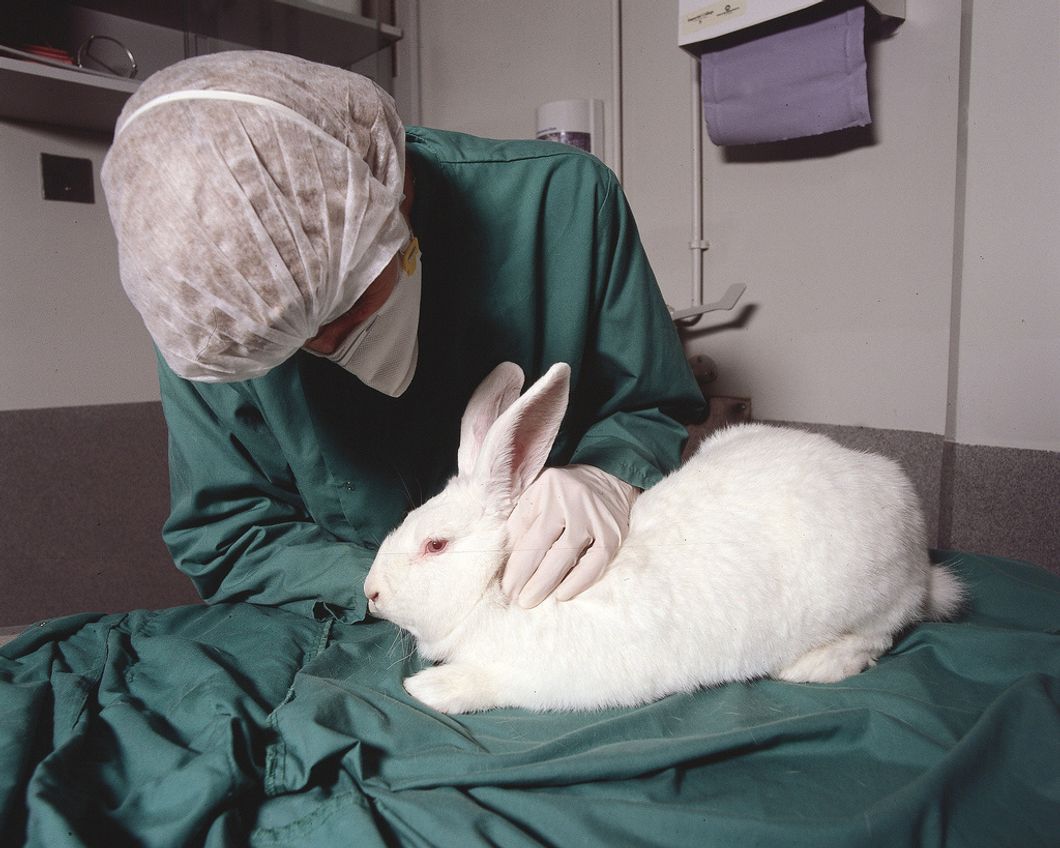A digital article published by People for the Ethical Treatment of Animals, also know as PETA, describes horrific laboratory environments where animals from monkeys to mice are tortured and mutilated, voicing to their readers that "there's likely a hellish laboratory" in their audience's own city or home that is similar the one they described. Scathing articles, grotesquely expository images, and jarring advertisements are displayed on their website, proclaiming ideas of a naïve utopia where no animals are harmed in the name of science.
Contrary to perception perpetrated by groups like PETA, regulations that promote humane conditions for animals are widely enforced for the use of live animals during experimentation. The 3Rs Campaign is a widely regarded framework created by the Universities Federation for Animal Welfare science society that addresses ethical concerns regarding the well-being and humane treatment of lab animals, supporting the replacement of animal subjects with alternative methods when possible, reduction of the number of animals used in testing, and refinement of techniques implemented during experimentation to mitigate as much pain and suffering as possible.
Rats, mice, and other rodents are the most commonplace test subjects, with more than 98% of their DNA being similar to humans. Furthermore, chimpanzees share an even more significant portion of their genetic information with humans – greater than 99%. Due to their biological similarities, animals are prone to be affected by the same illnesses or health ailments as humans, making them valuable subjects for research.
Animals also provide helpful insight into health issues that span an entire lifetime, as their own life cycles are shorter than that of humans.
Additionally, in order to properly prevent outside factors from compromising scientific research and conduct tests in a controlled manner, scientists are able to conveniently decide the environmental factors that animals they use for experimentation live in. Whether it may be diet, temperature, or light intensity, scientists have the ability to restrict or manage aspects of research that simply would not be plausible with human test subjects.
Although public outcries often elicit claims that substantial numbers of large mammals such as dogs, cats, or primates are used in research, these animals only compose of a minute percentage of animals in testing.
An estimated 95% of research animals are rats or mice that are specially bred for testing, 4.25% are other animals such as rabbits, fish, sheep, frogs, or insects, and of the approximately 17 to 23 millions animals used in research, less than 1% include dog, cats, or primates.
Animal testing is also more expensive than alternative methods that use in vitro simulation to test for adverse substance reactions in test tubes or other models that do not physically take place inside a living animal. This fact proves that experiments utilizing animals are not conducted frivolously, as they require costly funding for labor-intensive work, along with providing the proper care for animal subjects. While it is possible to determine and test for certain adverse reactions through a bacterial cell culture, only animals provide a glimpse at how the specific body parts coexist and react as a whole system.
When animal testing is not properly utilized during the trial stages of a new drug, the results could potentially be disastrous. An example that demonstrates the debilitating consequences of insufficient animal testing is the thalidomide incident that occurred in the late 1950s and early 1960s. Thalidomide was originally marketed as a "wonder drug" that could alleviate symptoms of insomnia, headaches, or pain. Due to thalidomide's ability to treat symptoms commonly present in morning sickness, thousands of women took it during their pregnancies, leading to more than 10,000 babies being born with devastating malformations and absent limbs in 46 countries around the world. After its withdrawal from the market, thalidomide was found to induce teratogenic effects on fetuses when tested in pregnant animals.
This case highlights the necessity for thorough animal testing because thalidomide only passed basic initial safety tests on animals, but it was not screened for effects as a teratogen or causing birth defects with more extensive testing.
As previously alluded, animal testing has allowed for the advancement of modern medicine. The discovery of penicillin and its antibiotic properties sparked a medical revolution in the treatment of bacterial illnesses after first conducting tests on mice in 1940. During the assessment, eight mice were injected with a fatal dose of scarlet fever-inducing bacteria called Streptococci, and four of them were treated with penicillin. Only the four mice that were given penicillin survived the trial, with the priceless sacrifice of the other four mice leading to the use of penicillin saving thousands of human lives each year.
The diseases that the modern generation currently face are dramatically different from those of previous lifetimes. Sixty years ago, polio was a prominently feared disease, striking fear into the hearts of Americans. The virus both killed and paralyzed its victims who were mainly children. Today, the disease has been widely eradicated throughout the world due to the polio vaccine, which was originally tested on monkeys, rats, and mice. Animal models proved to be invaluable in gaining valuable knowledge and understanding of the virus, leading to its complete annihilation in the United States since 1979.
Although animal rights activists make a strong ethical argument against animal testing, the counterargument has yielded significant positive results for the advancement of science and medicine.
Nearly every person has reaped the benefits of animal testing.
Vaccines, drug therapies, medical breakthroughs, and new revolutionary medical treatments have become an integral facet of a new era of developmental science. The undeniable truth is that animal testing is here to stay, at least until the advancement of technology is capable of generating better live system models to replace animal subjects.






















